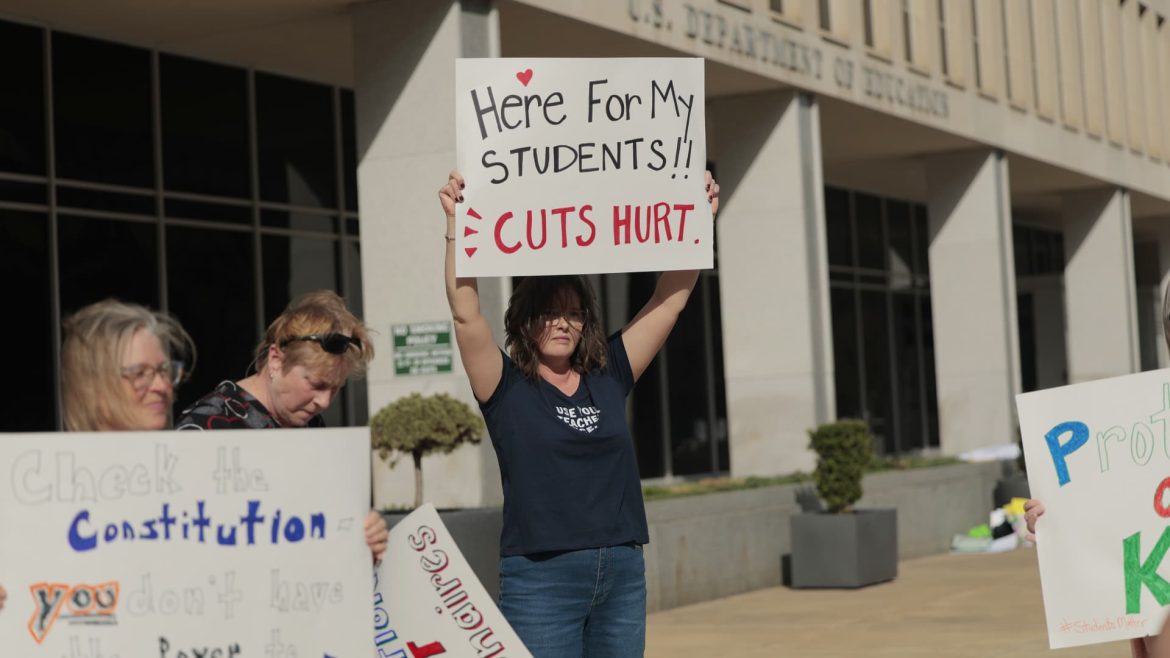The recent judicial interventions surrounding the Trump administration’s effort to dismantle the U.S. Department of Education have ignited a complex legal and political battle over federal authority, administrative prerogatives, and the future of education governance in America. Over 1,300 employees who were laid off as part of an aggressive downsizing and reorganization plan now face reinstatement orders from federal judges. This ongoing judicial pushback highlights significant constitutional and procedural issues while underscoring the broader consequences such executive actions could have on federal programs and educational infrastructure.
Background: Executive Order to Dismantle the Department of Education
In a decisive move, President Donald Trump signed an executive order aimed at fundamentally dismantling the Department of Education. While the department cannot be formally closed without Congressional approval, the administration has aggressively reduced its workforce—by nearly half in some accounts—and sought to curtail many core functions. The administration’s strategy appears designed to effectively gut the agency, maintaining only essential duties such as student loan servicing and special education programs, while reducing its broader regulatory, policy-setting, and oversight roles.
The action sparked immediate and widespread controversy. Democratic-led states, along with various education advocacy organizations, strongly opposed the maneuver. They contended that the layoff of thousands of federal probationary employees—who typically hold positions to support critical grant programs and enforce education laws—was unlawful and undermined statutory mandates governing the department’s operations.
Legal Challenges and Judicial Responses
Several federal judges quickly became involved in the unfolding legal challenge. Key rulings have come from courts in Massachusetts, Maryland, California, and Washington, D.C., reflecting the national reach and impact of these disputes.
Injunctions and Orders to Reinstate Employees
Federal judges have repeatedly blocked the Trump administration’s mass layoffs, issuing preliminary injunctions to halt further dismantling actions. For instance, a federal judge in Boston (U.S. District Judge Myong Joun) granted an injunction ordering the reinstatement of more than 1,300 Education Department employees who were fired as part of the March 11 layoff announcement. Other judges in Maryland and California have issued similar orders to reinstate thousands of federal probationary workers, citing procedural irregularities and violations of labor protections.
These court rulings emphasize that the administration failed to follow proper notification processes and that such drastic employment reductions threaten the department’s ability to fulfill its statutory responsibilities. Judges have pointed out that the administration’s attempts compromised the department’s capacity to administer essential grants, teacher preparation programs, and civil rights enforcement measures.
Questioning Executive Authority
The judiciary has also questioned the extent of the president’s authority to unilaterally shut down or significantly impair a federal agency without legislative approval. Multiple rulings have underscored that completely eliminating the Department of Education requires Congressional action, not just an executive order. Courts have warned against executive overreach, emphasizing the separation of powers established by the U.S. Constitution.
Beyond procedural failings, judges have cast doubt on the broader legality and legitimacy of the administration’s dismantling effort. This judicial stance underscores the fundamental tension between executive ambition and the statutory framework governing federal agencies.
Implications for Federal Employees and Educational Programs
The order to reinstate fired employees is significant not just as a legal victory but for its practical impact on the department’s functionality. Probationary employees, many of whom work directly with education grants, teacher preparation, and compliance monitoring, are pivotal to sustaining federal educational commitments, especially in states with Democratic leadership that rely on these programs.
The suspension of grant funding and reduction in workforce threatened to gut teacher preparation initiatives and other federally funded education programs, disproportionately affecting underserved and marginalized communities. Restoring these employees ensures continuity of services tied to educational equity, civil rights enforcement, and financial aid administration.
Moreover, maintaining a fully operational workforce will support the department’s capacity to oversee critical compliance issues and to effectively manage student loan programs, which remain a lifeline for millions of Americans.
Political and Policy Considerations
This conflict reflects deeper philosophical divisions over the federal role in education. The Trump administration’s push to dismantle the Department of Education aligns with a broader conservative agenda favoring state control, reduced federal oversight, and smaller government. However, the court rulings accentuate that sweeping policy reversals and atomization of federal agencies are bound by legal processes and democratic checks.
On the other side, Democratic-led states and education advocates insist on the department’s indispensability, stressing federal involvement in ensuring equitable access to quality education. The active lawsuits and injunctions demonstrate the potent resistance organized around preserving these functions and the federal workforce supporting them.
Conclusion: A High-Stakes Clash Over Federal Governance and Education’s Future
The recent federal court rulings ordering the Trump administration to reinstate over 1,300 Education Department employees and block mass layoffs mark a critical juncture in U.S. education policy and administrative law. They serve as powerful reminders that dismantling a federal institution cannot occur through executive edict alone, especially when it risks undermining statutory mandates and critical public services.
This ongoing legal battle underscores the complex interplay between executive power, congressional authority, and judiciary oversight. More importantly, it reveals the profound stakes involved—not only for the careers of thousands of federal workers but also for the millions of students, educators, and communities depending on the Department of Education’s programs and protections.
The outcome of this judicial resistance will shape the trajectory of American education governance, the balance of federal and state roles, and the safeguard of fundamental educational rights in the years ahead. The courts have, for now, reaffirmed that legal and procedural norms remain essential bulwarks against precipitous and sweeping governmental changes that affect the public interest at scale.





